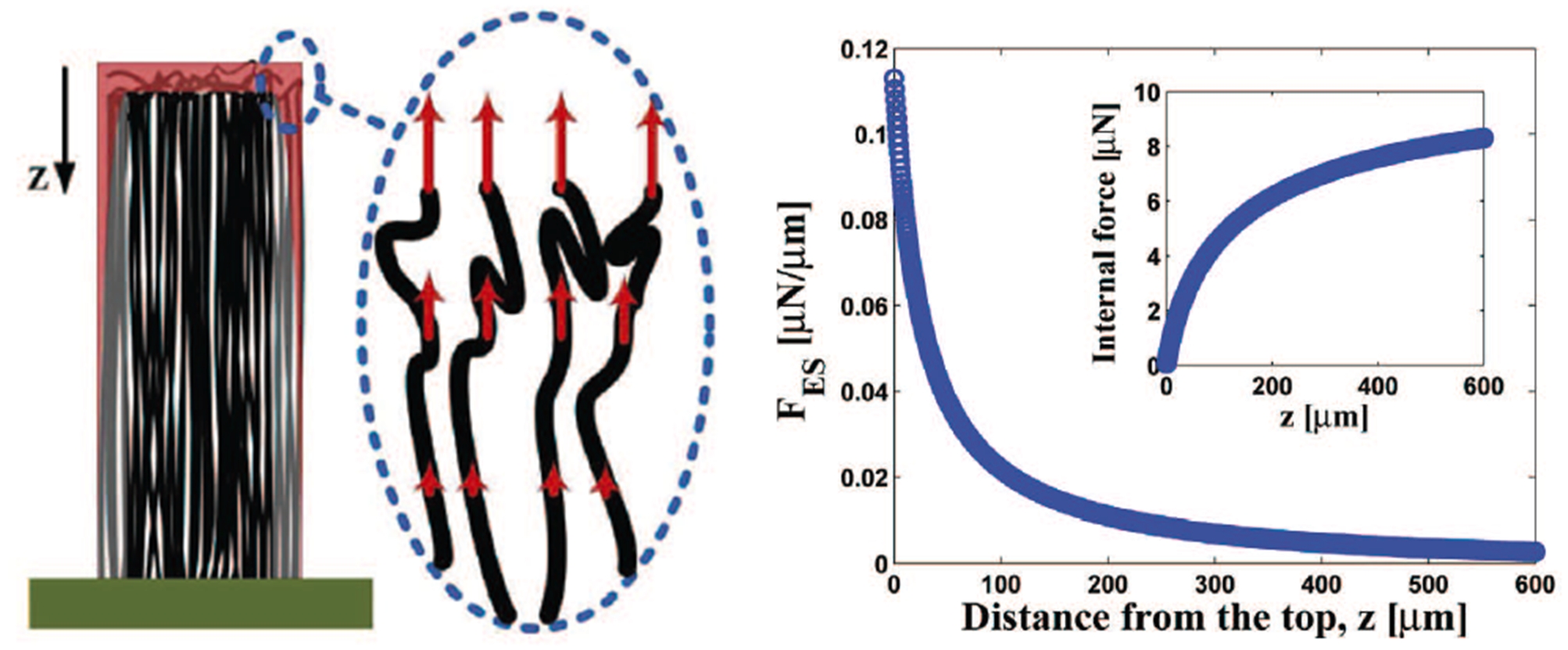
Year
2016Volume
96Pages
250–258Abstract
Electrostatic loading is widely used for sensing and actuation in miniaturized electromechanical systems, yet classical designs involve geometric patterning of solid materials such as silicon and metal films. Conductive nanoporous materials for electrostatics may enable engineering of new functionalities arising from their compliance, internal surface forces, and high surface area. Toward this end, we investigate the response of vertically aligned carbon nanotube (CNT) ”forests” to DC and AC electrostatic loads. First, the tensile strain-stress characteristics of patterned CNT forests was determined in a non-contact manner by cyclic DC electrostatic loading, revealing an increase of the effective Young’s modulus with sequential load cycling. Next, we observed resonance can be excited by AC electrostatic loading, and that the resonance frequency increases with sequential sweeps of the AC load frequency. Both the DC and AC measurements indicate that release of residual strain arising during CNT growth is relaxed upon electrostatic loading, causing stiffening of the structure. This study shows for the first time that CNT forests can function as bulk electrostatic elements, and their intrinsic low stiffness and quality factor may be suitable for development of wide bandwidth micro-resonators and adsorption-based sensors.






